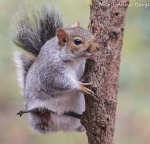To enlarge an image, click on the thumbnail below.
-

-
Variegated Fritillary on Short-toothed Mountain Mint
-

-
Sachem on Virginia Mountain Mint
-

-
Sachem mating – They met on Mountain Mint!
-

-
Northern Broken-dash on Hoary Mountain Mint
-

-
Juniper Hairstreak on Narrow-leaved Mountain Mint
-

-
Hoary Mountain Mint with Northern Broken Dash
-

-
Gray Hairstreak on Virginia Mountain Mint
-

-
Eastern-tailed Blue on Short-toothed Mountain Mint
-

-
Eastern Tiger Swallowtail on Hoary Mountain Mint
-

-
Common Buckeye on Narrow-leaved Mountain Mint
-

-
Common Buckeye and Honey Bees on Short-toothed Mountain Mint
Looking for a deer-resistant pollinator magnet? Mountain Mints are your answer.
Usually blooming from late June through August, Mountain Mints attract a spectacular assortment of butterflies, bees, moths, and other critters. These beneficial insects graze amiably together for nectar, since the profusion of tiny blossoms offered by these plants provide enough food for everyone to dine in harmony for many weeks throughout the summer. From morning until evening Mountain Mints are alive with the dance of pollinators.
There are several species of Mountain Mints, but my favorites are Short-toothed Mountain Mint (Pycnanthemum muticum) and Hoary Mountain Mint (Pycnanthemum incanum). The genus name, Pycnanthemum, means densely flowered, hinting at the reason that these plants can accommodate so many hungry visitors simultaneously. The foliage of these two species is as showy as the flowers, enhancing their visual appeal.
Plants are all about surviving and reproducing, and Mountain Mints are among the plant species whose survival strategy is to produce clusters of diminutive flowers, together forming a showy inflorescence, a strategy that has evolved to attract insects as assistants in the pollination process. Individual flowers in each cluster bloom progressively over many weeks, increasing each plant’s chances for successful reproduction. This works out really well for their pollinator partners, who are looking for a continuing reliable source of food.
Short-toothed Mountain Mint grows to a maximum height of about three feet, topped with round heads of tiny white flowers smudged with bright magenta. The plants are truly ‘densely flowered’. A soft velvety bed of pale blue-green foliage frames the blossoms. Rub or crush the leaves and you’ll be rewarded with a scent that confirms that this is a mint family member. Short-toothed Mountain Mint can tolerate part shade to full sun, and likes moist but well-drained, average soil.
Hoary Mountain Mint, as the name implies, has foliage very similar to Short-toothed Mountain Mint, with the leaves just below the flower heads looking as if they had been lightly but evenly dusted with powdered sugar. Each delicate flower is white with a sprinkling of tiny purple spots. The flowers grow in rounded heads much like Short-toothed Mountain Mint, but the blossoms are somewhat larger, growing in multiple tiers on each stem. The branching habit is open and graceful, showing off the layers of flowers, and providing easy access to their many visitors. This species grows to a height of 2-4 feet, prefers sun, and average to dry soil.
Virginia (Pycnanthemum virginianum) and Narrow-leaved (Pycnanthemum tenuifolium) Mountain Mints are also good garden candidates. Narrow-leaved Mountain Mint grows to a height of 1-3 feet, while Virginia may achieve a slightly taller stature, depending on growing conditions.
The seemingly endless supply of nectar makes Mountain Mints a great option for attracting butterflies. Short-toothed, Narrow-leaved and Virginia Mountain Mints all attract small to medium-size butterflies; expect to see hairstreaks, blues, Common Buckeyes, ladies and smaller fritillaries. Hoary Mountain Mint flowers are large enough to also accommodate larger butterflies, like some of the swallowtails.
If you have a vegetable garden, you might consider planting some Mountain Mint nearby. Good nectar producing plants like these attract many bee species that will help increase your garden’s yield.
Because of their strongly fragrant foliage, foraging deer reject Mountain Mints. In fall the flower heads dry to a dramatic steel gray, and can be an eye-catching addition to a garden in winter.
The Mountain Mints have adapted to thrive in a fairly broad range of weather conditions. All of these species are native to much of the eastern half of the United States, some as far west as Texas, and as far north as the eastern Canadian Provinces. In the northeastern U.S., they have been holding their own very well even during this hot, dry summer. To see if a particular species is native in your area, and for additional Mountain Mint species, check the USDA website: http://plants.usda.gov/java/profile?symbol=PYCNA











































































































